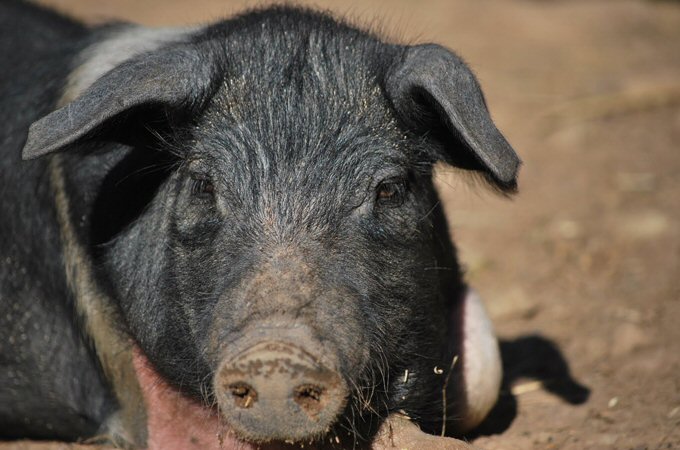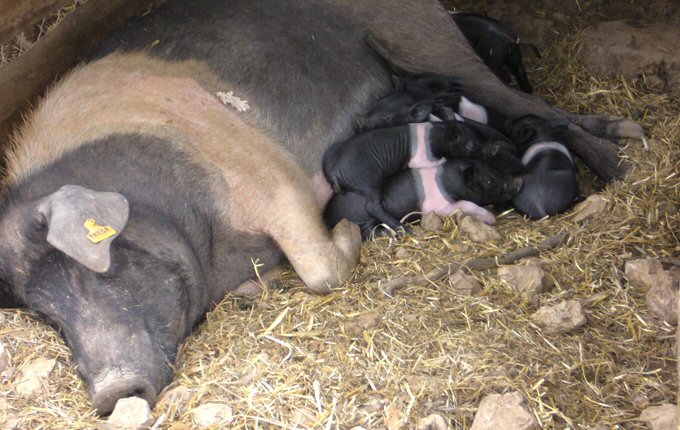The Pig with the belt!

The Cinta Senese has ancient origins. One of the earliest proofs of its existence is the image depicted in the fresco of the Good Government by Ambrogio Lorenzetti in the Palazzo Comunale of Siena, dating back to 1338. When it was introduced into Sienese territory it spread immediately due to its toughness and adaptability to being reared in the wild.
Until the 1950's almost every family bred a Cinta, which was then used for its meat and for making a supply of cured meats. Then breeds of white pig were introduced and the "Large White" predominated. This was a great revolution in so far as the latter breed, even if it was unsuitable for rearing in the wild, was more prolific than the Cinta, and was ready for butchering after only 6 months while the Cinta needed more than a year. The fashion subsequently was to cross the Large White male with the Cinta Senese sow, thus producing the so called "Grey pigs". These maintained their characteristic of suitability for being reared in the wild but developed more quickly.
The practice of cross breeding is still carried out today and one could say that it is the main reason for the survival of the "Cinta" breed. The reason which has led some rare breeders to maintain the pure "Cinta Senese" is precisely to be able to cross them with the white breeds. This interest in renewing the pure"Cinta" has been active in the last few years. A number of breeders have decided to take part in the re-introduction of this native but almost extinct breed.
In San Casciano farms are still breeding the pure Cinta Senese that you can discover and enjoy in the followings shops.
The Region of Tuscany, the Province of Siena, the Association of Sienese Breeders and other organizations have made a considerable effort by incentivizing contributions and the maintenance of breeders, the purpose being to reach a sufficient number of animals so as to eliminate the Cinta Senese from the list of animals in danger of extinction.